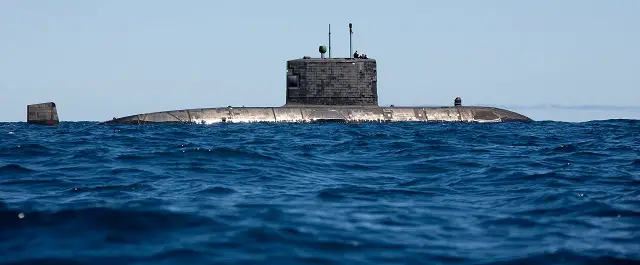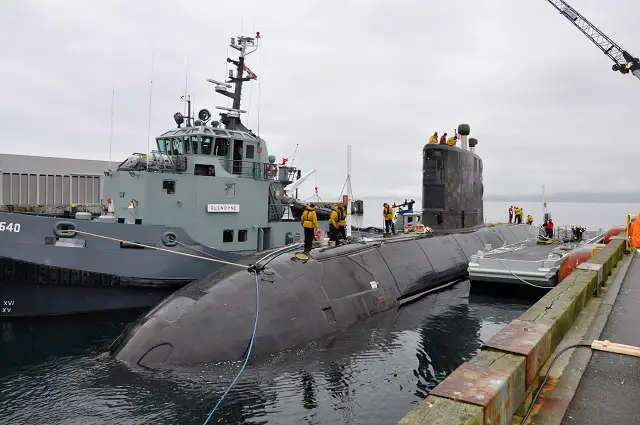Breaking news
Royal Canadian Navy Victoria-Class Submarine Fleet is Operational.
| 2015
 HMCS Corner Brook, the third Victoria class SSK. Picture: RCN |
|||
Victoria-class
submarines are extremely versatile, allowing them to operate in any weather
condition for periods of up to 45 days, and perform in a variety of roles
to fulfill Canada’s requirements for a balanced, multi-purpose and
combat-effective naval fleet. In addition to their inherent lethality and strategic importance as a war-fighting vessel, they fill a wide array of peacetime naval roles: •Fisheries patrols •Surveillance of all three Canadian coastlines •Support to maritime law enforcement and other governmental departments •Maintenance of fleet skills •Bilateral engagement with continental defence partners •Participation in multinational exercises •Deterrence of would-be terrorists, smugglers and polluters Status of individual submarines -- HMCS Victoria HMCS Victoria was declared fully operational in 2012. Since that time, Victoria has participated in various advanced international exercises such as the Rim of the Pacific (RIMPAC), revealing the modern and unique capabilities of the Victoria-class submarine while providing anti-submarine training for Canadian and international maritime vessels. As part of RIMPAC 2012, Victoria was the first of its class to fire the Royal Canadian Navy (RCN) Mk48 torpedo, sinking the decommissioned United States Naval Ship Concord. This clearly demonstrated the lethality of Victoria-class submarines. Victoria worked with Special Forces during Joint Exercise 2013 and other binational continental defence exercises, and also participated in operations on behalf of Canada. -- HMCS Windsor HMCS Windsor docked in 2014 to allow for replacement of one of its generators. The RCN took advantage of that docking period to accelerate the previously planned installation of some exciting upgrades, including a state-of-the-art bow sonar system that wasn’t originally scheduled to go in until 2016. The new sonar system will bring the entire sonar suite of the Victoria Class forward – from 1980s technology into the 21st century – in order to continue to act on behalf of Canada in the face of emerging maritime threats. Windsor was back at sea in December 2014. Windsor sailed from June 2005 to December 2006 and spent 146 days at sea in 2006 alone. The submarine participated in a number of large Canada/U.S. exercises, advanced and improved special operations forces capabilities, and trained with Canadian ships in essential warfare skills. Windsor also participated in the first-ever parachute rendezvous at sea practised with Canada's Patrol Pathfinders (soldiers specialized in the insertion and extraction of follow-on forces). The submarine also conducted several sovereignty patrols off Canada's east coast for intelligence gathering, surveillance and reconnaissance. Since the end of its last deep maintenance period in 2012, Windsor has spent a total of 174 days at sea. -- HMCS Chicoutimi HMCS Chicoutimi completed its EDWP and returned to the RCN fleet in December 2014. This was the first EDWP conducted by industry under the VISSC. This contract highlights a key strategic knowledge sharing initiative and partnership between the RCN and Canadian industry. The successful completion of Chicoutimi’s return to operations was enabled by the skills and talent of Canada’s submarine community and the relationships forged with industry. These partnerships enabled the establishment of new supply chains and the integrated logistics to sustain these complex weapons systems. -- HMCS Corner Brook HMCS Corner Brook is docked at Victoria Shipyards Co. Ltd., in Esquimalt, B.C., to undergo its EDWP under the VISSC with Babcock Canada Inc. It is scheduled to remain in EDWP until 2017. |
|||



























